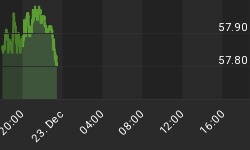
Source: www.sharelynx.com
The above chart had always been interesting. The chart compares the US debt limit with the rise in debt and the rise in the price of gold. As the US debt limit was increased and the US debt grew, gold prices appeared to move in lockstep. That is until about 2011 when gold prices took off. Since the gold price has gone through one of its biggest shakeouts. Now it has fallen behind the debt limit and debt about as much as it exceeded them at the top in gold prices in September 2011. So will it adjust again to bring the trend back into balance?
That remains to be seen. Many have cited this chart as proof that as the US debt and debt ceiling rises, gold prices rise generally in lockstep. The chart, unfortunately only dates back to 2000 so it says nothing about the relationship prior to that. The relationship may or may not have held.
The US first set a debt limit in 1917 during WW1. Its purpose was to allow the executive branch to issue bonds and take on other debt without going back to Congress every time. Prior to 1917, the US had to have each bond issue authorized by Congress. In 1939, the US instituted the first limit on total accumulated debt over all instruments. Since then there has been numerous debt limit debates and the debt limit has grown over time.
The table below shows the growth in the debt limit since 1940 (earliest numbers I could find). The debt limit has been compared to the annual average price of gold. It was quite surprising to find that the gold/debt limit ratio initial was quite high when compared to later years. The ratio only ever approached the level of 1940 again in 1980 when gold prices spiked to $850.
| Year | Gold Price (yearly average) | Debt Limit (Billions US$) | Gold Price/Debt Limit Ratio | US Gold Reserves (metric tonnes fine gold) | $ Value of Gold Reserves (Billions US$) | Value of Gold Reserves/Debt Limit Ratio |
| 1940 | $34 | $49 | 0.69 | 19,543.30 | $21.4 | 0.44 |
| 1945 | $35 | $300 | 0.12 | 17,848.00 | $20.1 | 0.07 |
| 1950 | $35 | $275 | 0.13 | 20,279.00 | $22.8 | 0.08 |
| 1955 | $35 | $281 | 0.12 | 19,331.00 | $21.8 | 0.08 |
| 1960 | $35 | $293 | 0.12 | 15,822.00 | $17.8 | 0.06 |
| 1965 | $35 | $328 | 0.11 | 12,499.00 | $14.1 | 0.04 |
| 1970 | $36 | $395 | 0.09 | 9,839.00 | $11.4 | 0.03 |
| 1975 | $161 | $577 | 0.28 | 8,544.00 | $44.2 | 0.08 |
| 1980 | $613 | $925 | 0.66 | 8,221.00 | $162.0 | 0.17 |
| 1985 | $317 | $1903 | 0.17 | 8,169.00 | $83.3 | 0.04 |
| 1990 | $384 | $3,195 | 0.12 | 8,146.00 | $100.6 | 0.03 |
| 1995 | $384 | $4,900 | 0.08 | 8,140.00 | $100.5 | 0.02 |
| 2000 | $279 | $5,950 | 0.05 | 8,137.00 | $73.0 | 0.01 |
| 2005 | $445 | $8,184 | 0.05 | 8,135.00 | $116.4 | 0.01 |
| 2010 | $1225 | $14,294 | 0.09 | 8,133.00 | $320.3 | 0.02 |
| Today | $1300 | $16,700 | 0.08 | 8,133.00 | $339.9 | 0.02 |
On average the gold price/debt limit ratio has been around 0.11 if one eliminates the two high readings in 1940 and 1980. By that definition gold's price is somewhat undervalued at current levels. Gold prices should be around $1,800 in order to maintain or at least get back to a 0.11 ratio. At the recent top in September 2011, the ratio was just over 0.12. As can be seen it has since fallen.
When one factors in the US's gold reserves and the value of the gold reserves a slightly different picture emerges. US gold reserves have actually fallen sharply since peaking at over 20,000 metric tonnes in 1950. Today US gold reserves are stated at 8,133 metric tonnes. In 1940, the value of the gold reserves to the debt limit was at 0.44. It has never been close since. Setting aside the other high reading of 0.17 in 1980 the average has been around 0.04. Today it is 0.02. If gold were to return to the average, gold prices would need to rise to $2,600. In September 2011, at the most recent high in gold the value of US's gold reserves to the debt limit ratio was still only 0.03.
Whether one measures the gold price against the debt limit or the value of the US's gold reserves to the debt limit the gold price appears to be undervalued. On the other hand, things could be worse. In 2000 and 2005 the gold price/debt limit ratio was at 0.05 and the $ value of US gold reserves/debt limit ratio was at 0.01. I would rather be an optimist that the mean should be seen again.
















